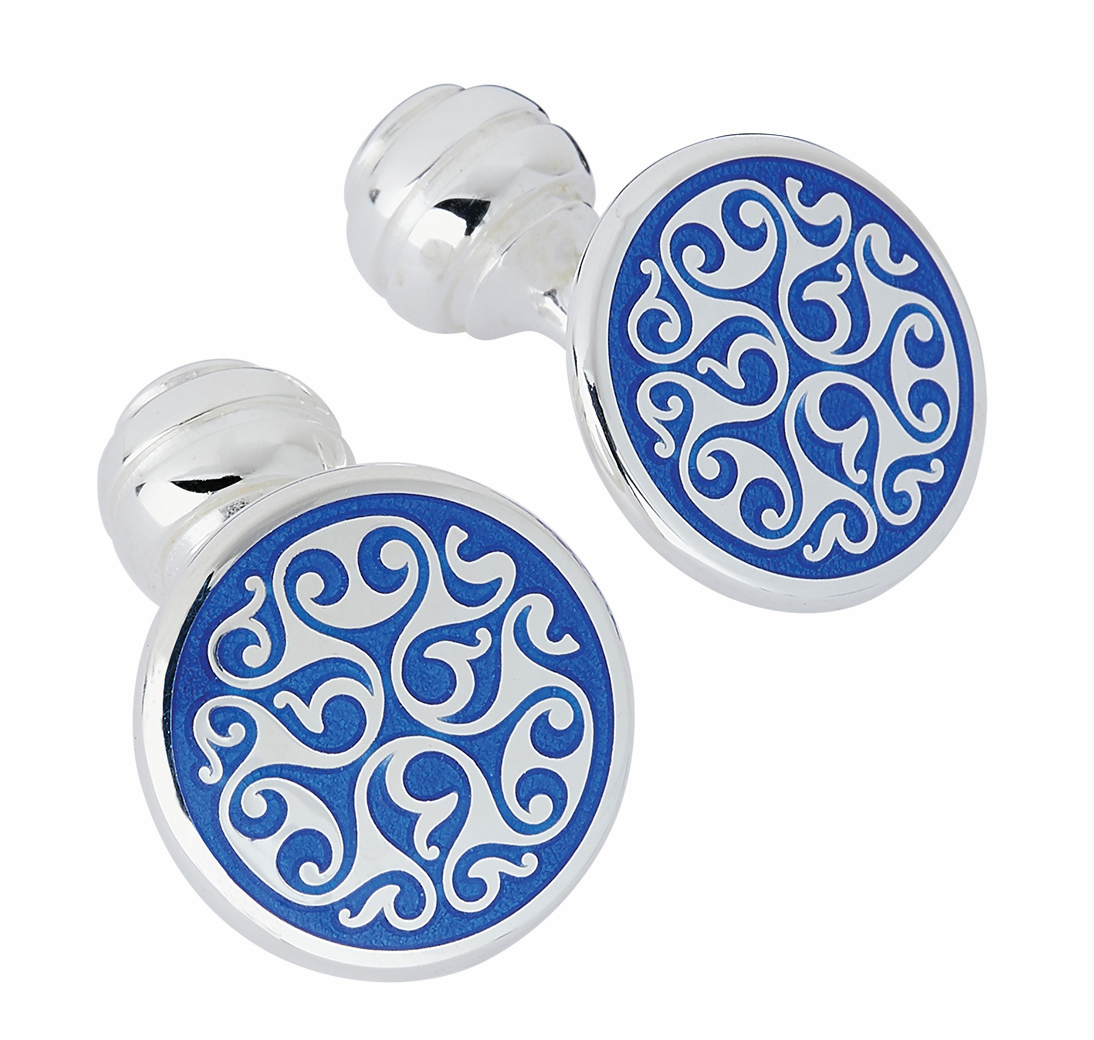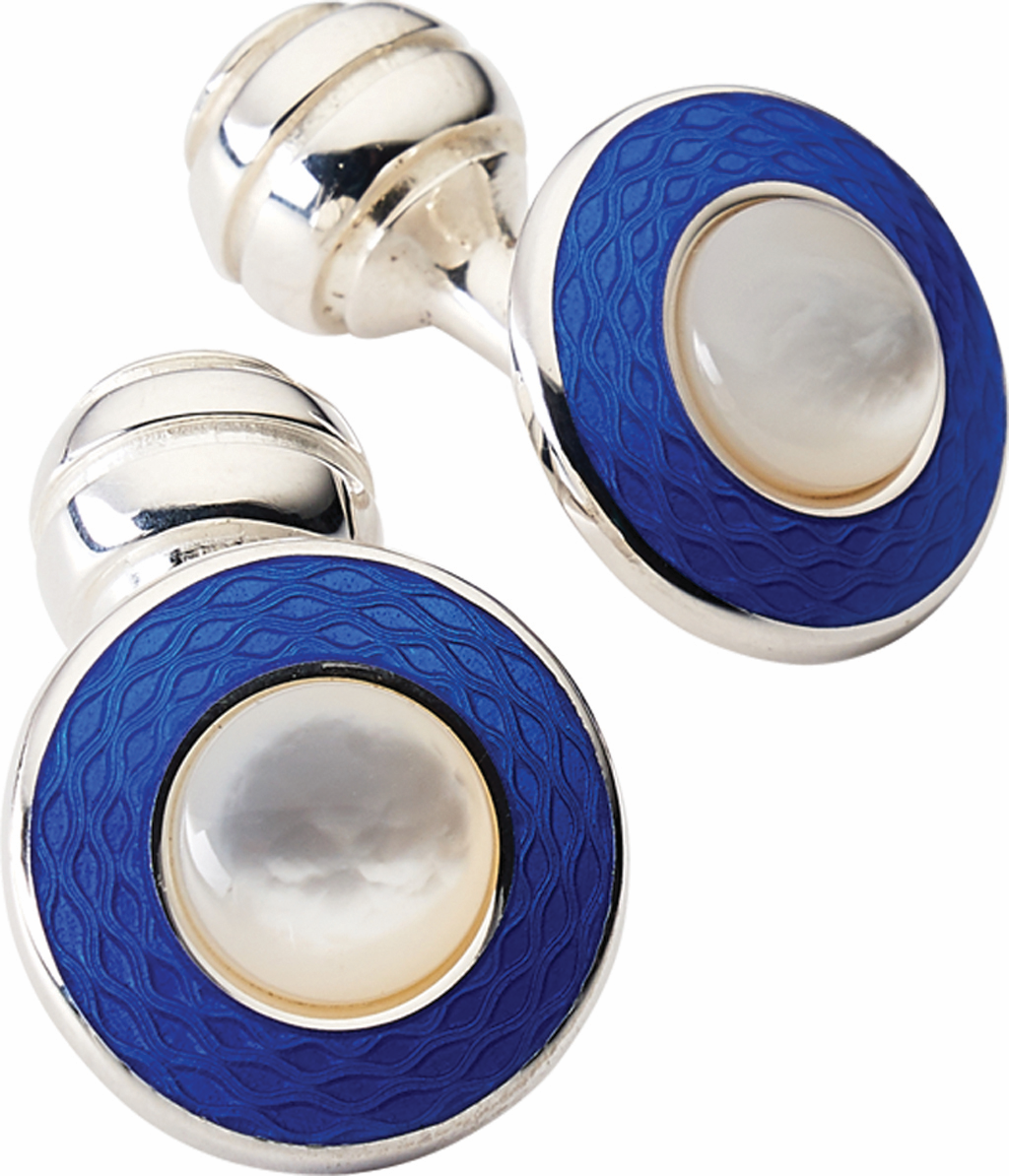
Although cufflinks have been recorded in use in the 17th century they were certainly not in common use until the late 18th century. This is due to their primary use being linked to various developments in men’s shirts. After the Middle Ages, mens shirts became decorated around the visible areas, such as neck and wrist with various decorative items, the ruff for example at the neck as well as various frills and sometimes embroidery. The cuffs were originally tied with coloured ribbons but everyday shirts were often secured with a button or pair of joined buttons. The 19th century saw gentlemens dress changed and we saw suits being worn during the day and a tailcoat for dinner in the evening. At the same time mens shirts, particularly for evenings had facings, collars and cuffs of a stiff starched material which was difficult to wear with normal buttons and so the cufflink and studs started to be the standard method of wearing such shirts. The industrial revolution meant that cufflinks could be produced to match every price range. King Edward VII popularised coloured cufflinks when he began wearing colourful Faberge cufflinks which led on to more men wearing them. Cufflinks no became a standard for men and the most, albeit of a few, acceptable items of jewellery men could wear. Over the years cufflinks have appeared in many materials and contain gemstones, made of precious metals, enamels and hand painted pieces. After the rationing and deprivation of the second World War, the UK started to see men wear and carry many more accessories which as well as cufflinks included, watches, money clips, tie-pins and tie slides. This continued through the 1960’s but the 1907’s saw a gradual decline and many men’s items were re-worked into earrings. Since the 1980’s cufflinks have grown in their appeal and today are more commonly worn with business shirts as well as maintaining their use in formal wear such as morning dress, black and white tie events. Today many weddings use cufflinks as bespoke gifts to the close family of the bride and groom to mark the special day and other events are also marked with presentation pieces. Although a strong market there remain very few British manufacturers of fine quality pieces. Benkes of England manufacture all of their cufflinks in the famous Jewellery Quarter of Birmingham in a factory under the same family ownership. The history of the factory goes back to 1880 and originally only manufactured to the trade but has now decided to launch this exciting range of products using all of the skill and craftsmanship it has developed over the years. Benkes are delighted to offer bespoke manufacture for the discerning individual either to mark a special occasion or simply to enjoy for yourself.

